The last couple of weeks have felt like deepest midwinter, but the days are getting longer, the sun is gradually climbing in the sky and spring is just around the corner. The birds know it and our trees do too. Watch out for an explosion of leaf, blossom and growth! There's a lot to talk about, so this is a pretty hefty newsletter. Hope you enjoy it.
Tree pits
Southwark has been digging tree pits all over Herne Hill during February in preparation for the second round of planting in winter/spring 2020/21. Here’s the tally of new planting sites, the trees that are earmarked for them and the pits in place at the time of writing:
17 new and existing pits
Burbage Road, outside no. 44 Half Moon Lane - Himalayan birch (Betula utilis jacquemontii)
Danecroft Road, no. 61 - Japanese pagoda tree (Sophora japonica)
Danecroft Road, no. 65/67 - Japanese pagoda tree
Elmwood Road, opposite no. 74 - Himalayan birch
Elmwood Road, opposite flats at nos. 76-86 - not known (unscheduled pit)
Frankfurt Road, between no. 2A and 63 Herne Hill - Himalayan birch
Frankfurt Road, no. 24 - ginkgo (Ginkgo biloba)
Hollingbourne Road, no. 3/5 - Yoshino cherry (Prunus x yedoensis)
Hollingbourne Road, no. 16/18 - Kanzan cherry (Prunus 'Kanzan')
Hollingbourne Road, no. 51, existing pit - either snowy mespil or winter-flowering cherry (Amelanchier or Prunus subhirtella 'Autumnalis')
Holmdene Avenue, no. 18 - sweet gum (Liquidambar styraciflua 'Worplesdon')
Red Post Hill, no. 42/44 - Henry's lime (Tilia henryana)
Red Post Hill, no. 56 - Henry's lime
Ruskin Walk, opposite no. 1 - Umineko cherry (Prunus 'Umineko')
Ruskin Walk, opposite no. 5 - not known (unscheduled pit)
Stradella Road, opposite no. 1 - Yoshino cherry
Stradella Road, no. 50 - Yoshino cherry.
Nine stumps (no pits yet)
Carver Road, no. 13 - tassel cherry (Prunus litigiosa)
Carver Road, no. 53/55 - tassel cherry
Elfindale Road , no. 19 - double-flowered wild cherry (Prunus avium 'Plena')
Elmwood Road, outside 96 Frankfurt - London plane (Platanus x hispanica)
Frankfurt Road, no. 19/21 - Himalayan birch
Frankfurt Road, no. 30/32 - ginkgo
Half Moon Lane, no. 29 - London plane
Half Moon Lane, no. 37 - London plane
Ruskin Walk, no. 26 - Umineko cherry.
Nine trees on grassy areas (pits not needed)
Casino Avenue, outside no. 36, in garden square - common hornbeam (Carpinus betulus )
Casino Avenue, outside no. 87, on grass verge - golden Indian bean tree (Catalpa bignoniodes 'Aurea')
Red Post Hill, outside Cassinghurst House - Common lime (Tilia x europaea)
Red Post Hill, outside Cassinghurst House - Red horse chestnut (Aesculus x carnea)
Sunray Avenue, outside 16/18, on grass verge - sweet gum
Sunray Avenue, outside nos. 49-71, in garden square - common quince (Cydonia oblongo)
Sunray Avenue, outside nos. 49-71, in garden square - almond (Prunus dulcis)
Sunray Avenue, outside nos. 49-71, in garden square - almond
Sunray Avenue, outside no. 113, on grass verge - Sunset Boulevard cherry (Prunus 'Sunset Boulevard').
Three pits still needed on pavement
Casino Avenue, opposite no. 8 - ginkgo
Winterbrook Road, opposite church - Yoshino cherry (no. 1 of 2)
Winterbrook Road, opposite church - Yoshino cherry (no. 2 of 2).
Two tarred-over old pits (surface can be readily removed for new planting)
Carver Road, no. 36A - tassel cherry
Hollingbourne Road, between no. 1 and Herne Hill - either snowy mespil or winter-flowering cherry.
Watering season just around the corner
There are lots of new trees already in the ground, lots more arriving over the next couple of months and lots of outdoor exercise in store for our volunteers, carrying precious water to all those saplings.
We have two particular challenges this year in keeping them well-watered: not just the high number of vulnerable young trees that need looking after, but the extended planting season. It would normally run from November to March, when the trees are dormant, but it’s been lengthened in 2021 until the end of May, when they will already be growing fast, needing high volumes of water and under potential heat stress.
Southwark’s maintenance teams are contracted to water new trees every two weeks in the summer months, but our street trees will need more frequent visits than that. Drop us a line if your see one of their lorries at work so that we can monitor how frequently they come.
We recommend filling the green Treegator watering bags, which hold 55 litres, once a week in the summer during at least their first two years on the street. The bags are zipped around every single new tree and they release water slowly, allowing it to reach down to the roots.
They don't need to be filled to the brim all in one go: you could space your watering trips out over a few days, as long as the weekly total is about 50 litres (11 gallons). Always fill the bag through the little slit between the two straps.
You should build up to the 50-litre figure during the spring and gradually reduce it in the autumn. But use your discretion. If the weather is hot and dry at any time, water some more. You can tell if a tree is stressed because the leaves will be limp, rather than firm. You can’t over-water them but you can easily under-water.
Also please avoid the temptation to plant flowers at the base of the tree until it’s been in place for at least two years. They’ll compete for water and it won’t reach the tree roots. Grass and weeds in the tree pit are also unhelpful.
Here are some useful links:
Arboricultural Association Watering young trees in dry weather
Tree Council Managing and caring for trees
Trees for Cities Watering urban trees
Barcham’s nursery Watering newly planted trees (Barcham’s supplies much of the council’s stock)
Treegator How often to water
Treegator How to use the bag
London Tree Officers Association Water management guidance.
Outside taps
Water is heavy: each litre weighs one kilogram. To cut down the distance you have to carry it we have a network of outside taps which members are happy to share. These are located at:
BURBAGE ROAD - nos. 29 and 70
ELFINDALE ROAD - no. 53
FRANKFURT ROAD - no. 60
HOLLINGBOURNE ROAD - nos. 48, 50 and 51
WARMINGTON ROAD - no. 12.
The manager of the car wash on Herne Hill, between Casino Avenue and Danecroft Road, has said you can fill up there too if you speak to him first.
If you've got a tap in your front garden that you'd be prepared to offer please let us know. And please get in touch with your street leader if you'd like to lend a hand with watering.
New trees on the streets
In our last newsletter we reported on the 13 trees that had already been planted since late November. We can now add two February arrivals: a Yoshino cherry outside nos. 28/30 Winterbrook Road and a Japanese pagoda tree at the foot of Holmdene Avenue.
The new cherry fills a gap in the stunning avenue of Yoshinos on Winterbrook, while the new sophora means there are now two saplings in the short distance between no. 96 Holmdene and the old off-licence at the junction with Half Moon Lane. The other, nearer the corner, is a ginkgo, which has been there since January.
We now expect another 40 trees to be planted in Herne Hill by the end of May, making a grand total of 55 over the whole 2020/21 planting campaign. It’s a brilliant result for our group, and our tree officers deserve warm praise for the efforts they’ve put in to achieve it.
We’ll also keep pressing the council to fulfil the two-year-old Cleaner Greener Safer award for an additional two trees at the top of Elfindale Road, past the garages on the even-numbered side. These still haven’t been scheduled.
Pagoda tree or ginkgo?
You’ll notice from the photos below the unique smooth, dark, greenish-brown bark of the young pagoda tree, with its striking white spots. See how that compares with the rugged pale brown bark of the other, older sophora directly across the road, outside the surveyors’ office at 139 Half Moon Lane.
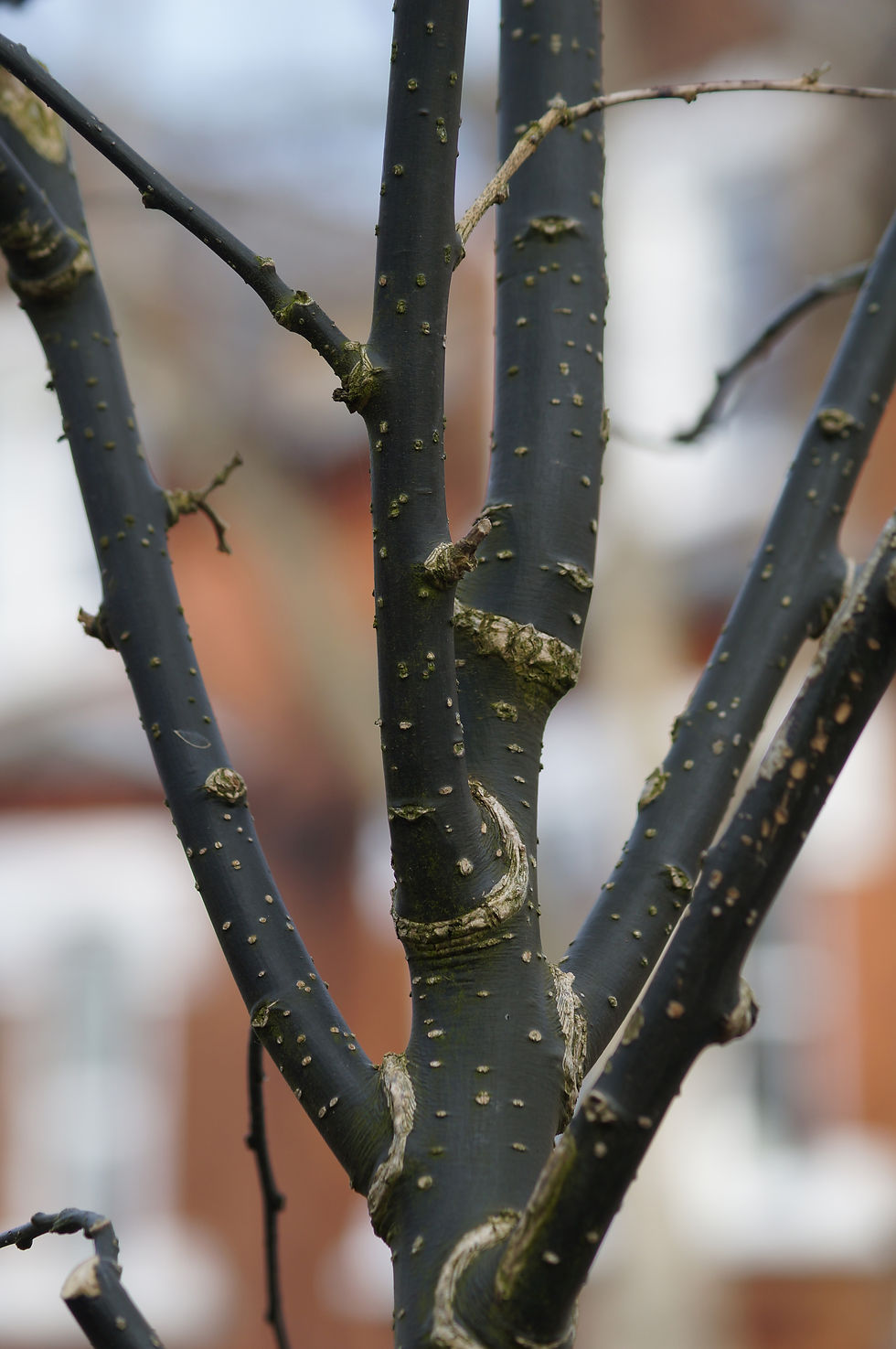
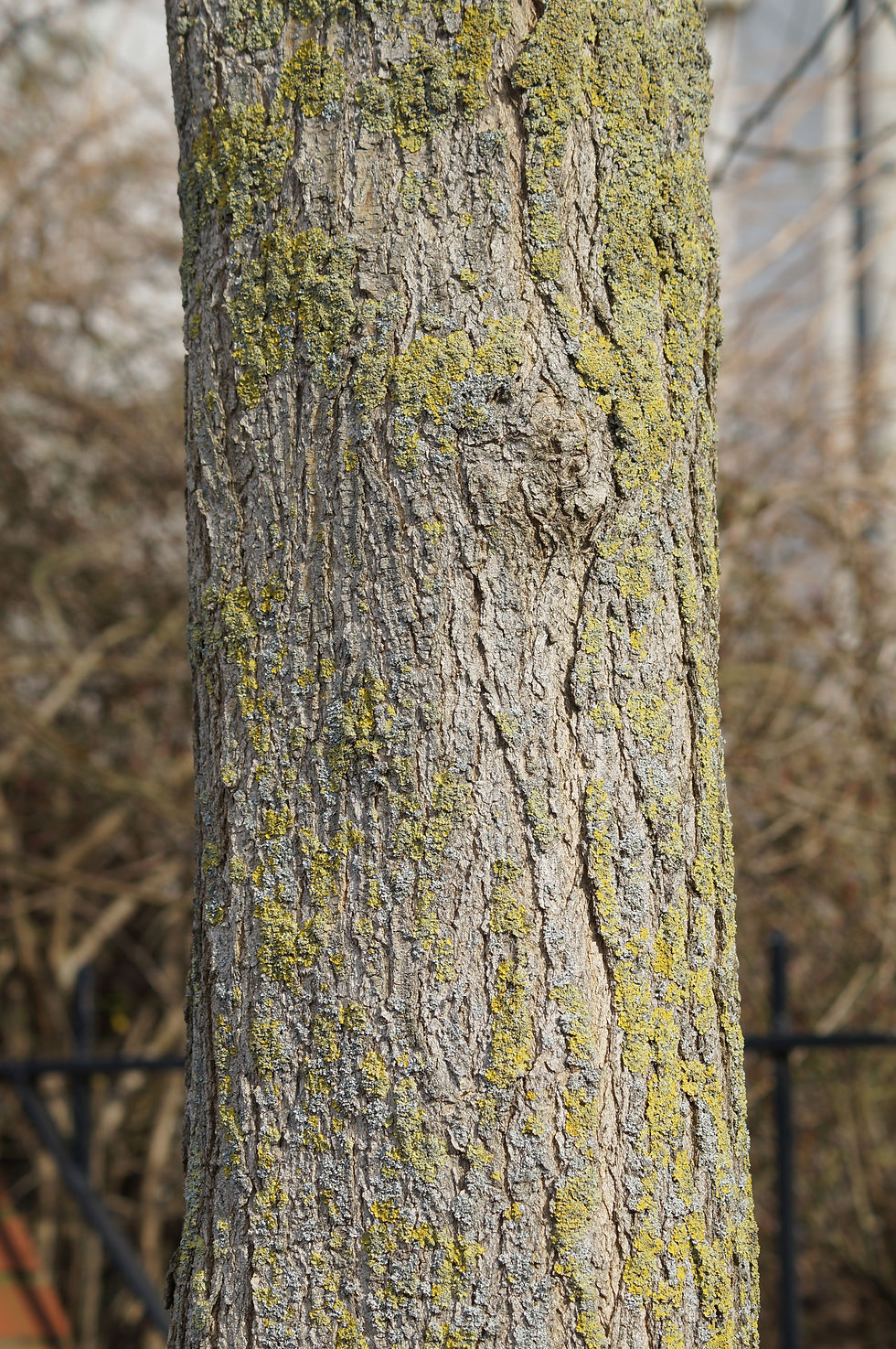
When we were putting together January’s newsletter we completely misidentified the other new tree at the bottom of Hollingbourne as a pagoda tree instead of what it actually is, a ginkgo (Ginkgo biloba). We didn’t know at the time how dramatically the pagoda tree’s bark changes as it grows.

These are obviously two wildly different trees, but the ginkgo sapling’s craggy, pale brown bark looked to us like the bark on the big pagoda tree over the road.
Winter tree identification
What that embarrassing mistake teaches us is that the only absolutely foolproof way of telling most bare trees apart in the wintertime is by looking at the buds and twigs. Bark can trick you, as we’ve seen. Silhouettes can help on big countryside trees, but less so in cities. Some fruit, seeds and leaves cling on over the winter, but that’s unusual.
Botanists use a ‘key’, a kind of tree ID flowchart that eliminates possible alternatives as you move through it. The key might start with the way the buds are arranged on the twig. Do they grow in opposite pairs or do they alternate?
Then the key asks whether the buds have scales or are naked. Are they hairy or sticky? What colour are the buds and twigs? Are the buds long and thin or fat and rounded? How do the leaf scars look (the little steps on the twig where last season’s leaves grew)? Are there thorns or spines? And what about the terminal buds (the buds at the very tip of each branch)? These can be single, double or multiple.
There’s a lot to learn, but by patient observation and a decent tree book you could become the neighbourhood expert. This online guide to buds could be a good place to start.
Here are a couple of local examples to get you going. First, terminal buds. If you wander round Dulwich Park walk up to one of the many big oaks. They're hard to miss, and some might still be wearing their distinctive leaves. Look closer, and you'll see that every oak twig has several buds in a clump at the tip. Nearer home, glance up into the many cherry trees on our streets: they also have clusters of terminal buds.
And if you see a tree round here with red buds it’s pretty likely to be either a horse chestnut (Aesculus) or a lime (Tilia). Those two are really simple to tell apart: the horse chestnut buds are enormous and sticky, and the lime buds are tiny, on a reddish-brown twig. Have a look at the pictures attached.
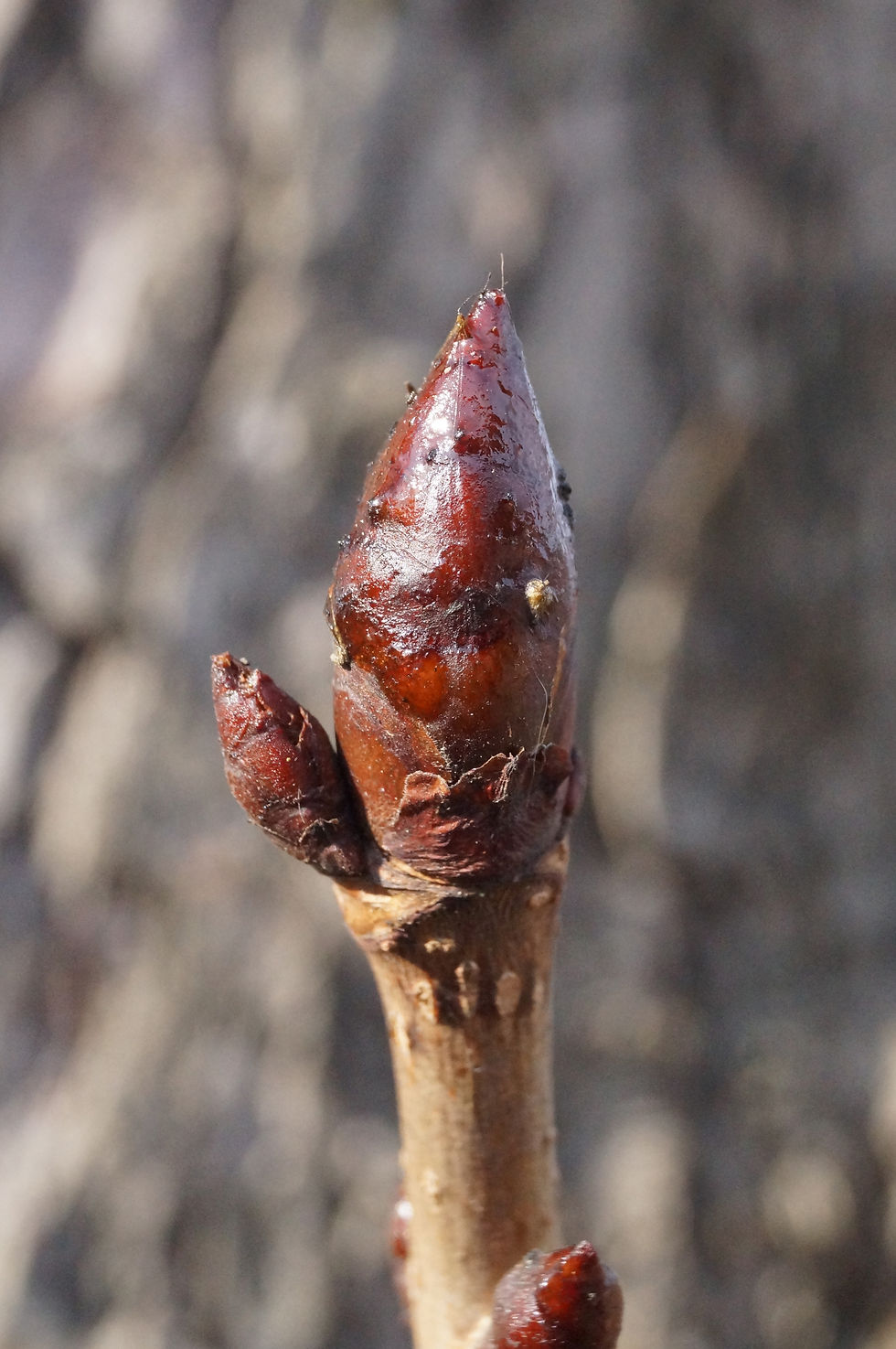
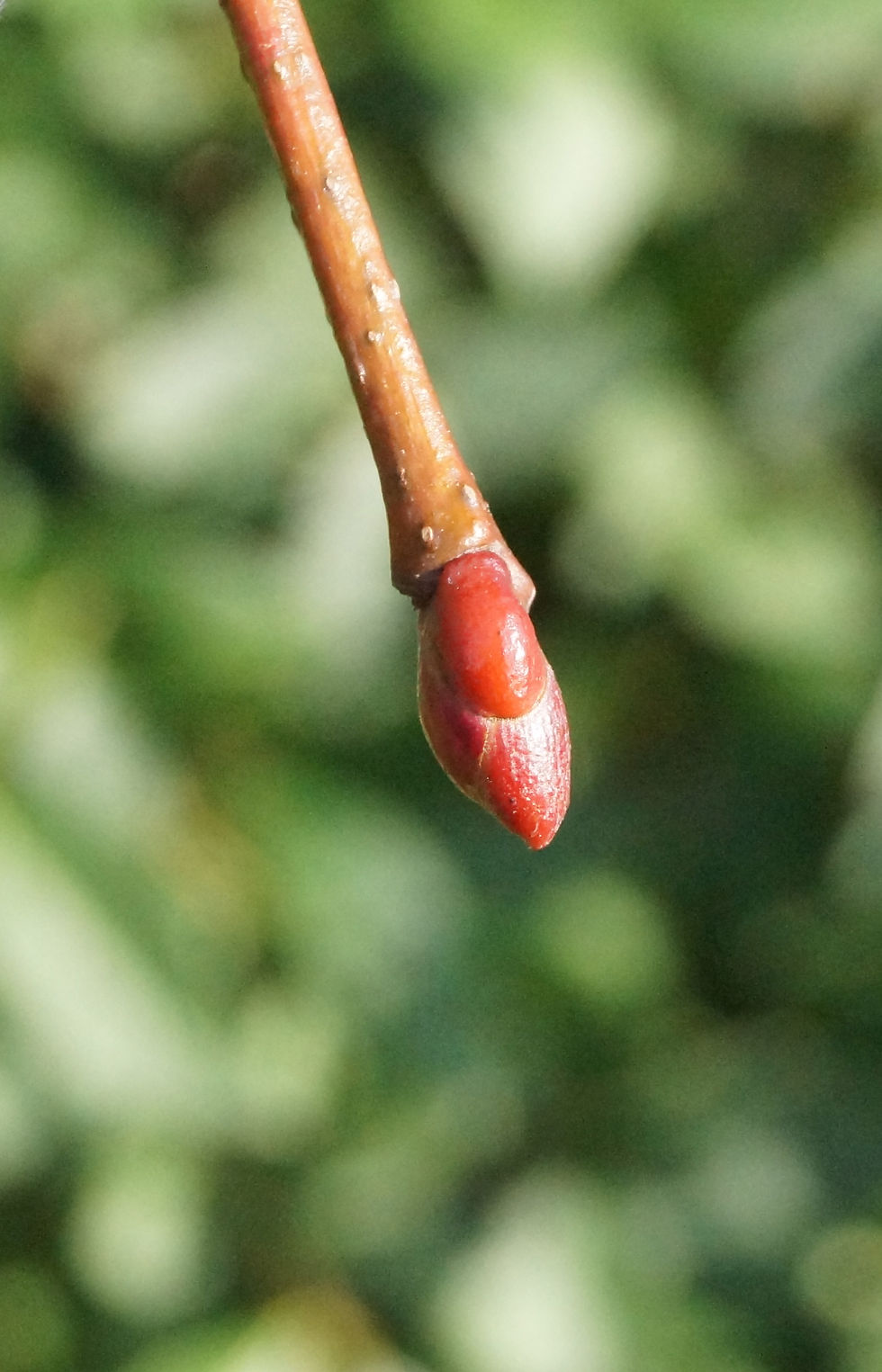
If you have children you could try taking one of these printable Woodland Trust guides to the park on your next family walk.
Great trees of Herne Hill
One tree that's pretty unmistakable in wintertime is the magnolia, and we're very lucky to have a lovely collection on Casino Avenue. There are 17 altogether, including one substantial tree opposite nos. 24-26. They're all covered right now in the characteristic furry flower buds, but these should start opening up very soon.
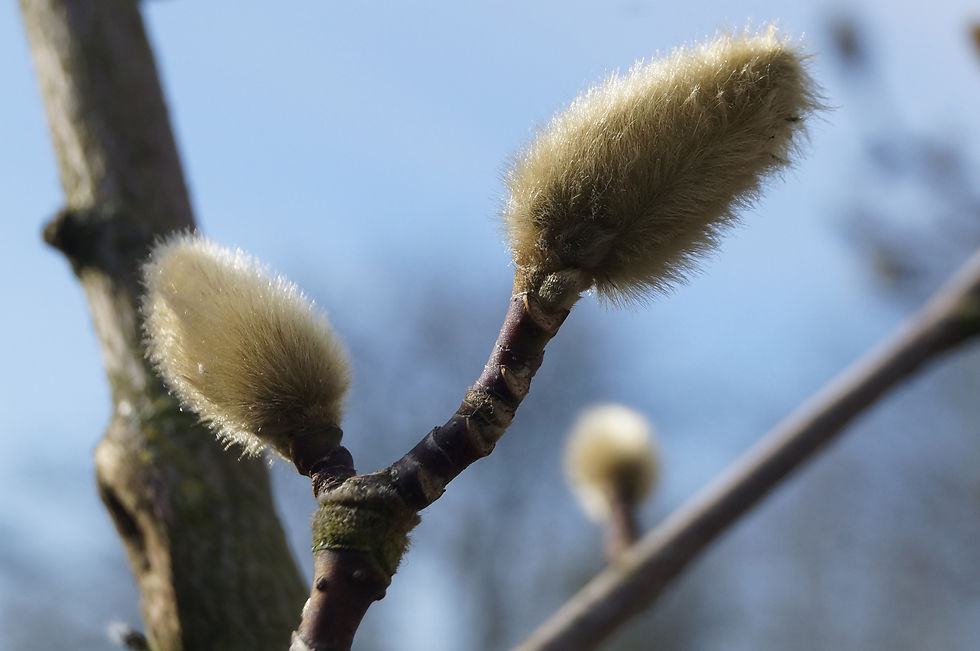
Three of our magnolias have pink blossom and the other 14 are white, but until the blooms appear it's hard to identify exactly which varieties they are. There are 80 species of magnolia worldwide, some evergreen and some deciduous, and countless varieties and cultivars.
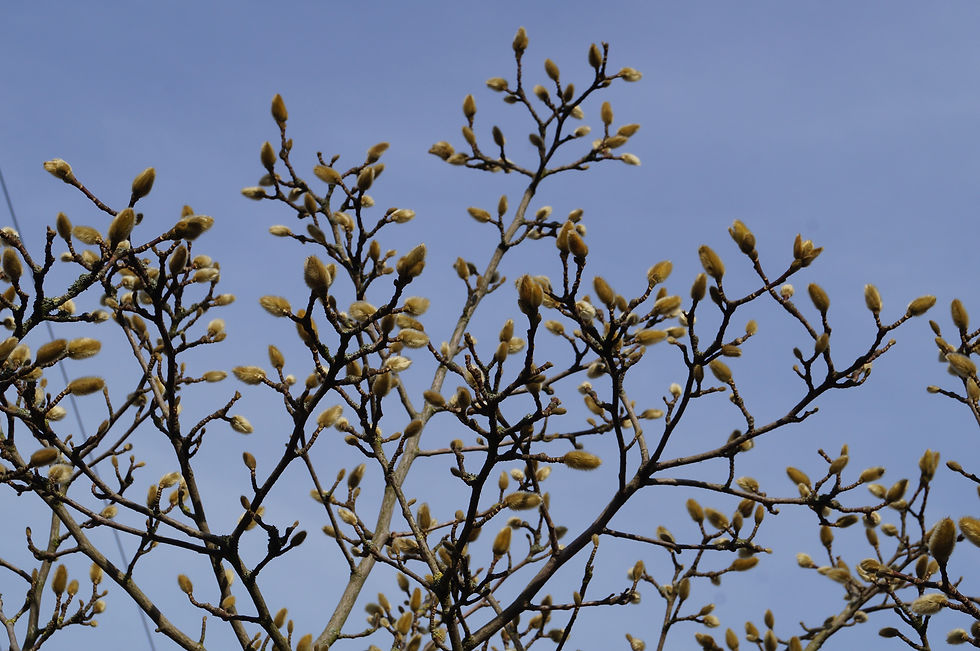
But Southwark plants only five types: Magnolia Galaxy, with pink flowers; Magnolia grandiflora (creamy white); Magnolia kobus (fragrant white, star-shaped flowers); Magnolia x loebneri 'Merrill' (lilac-pink); and Magnolia x soulangiana (white with a purple base).
The next time you take a summer holiday in Cornwall try to drop into Caerhays Castle, on the south coast, which houses one of Britain’s four national collections of magnolias. Their grounds have everything from garden shrubs to towering forest magnolias.
Recent losses
Two trees in our area have come down in February, the first losses for a long time. One, a medium-sized London plane outside 101 Herne Hill, at the top of Hollingbourne Road, was felled by the council. We’ll make sure a replacement is planted.
The other is a laburnum, one of a pair on a grass verge on Red Post Hill, nearby the pedestrian crossing outside Sunray Gardens. It fell on February 13th but had been dead for a while. Its neighbour is also in poor condition and we’d like to get them replaced with three disease-resistant hybrid elms.
Our funding bid
Next week, on Tuesday February 23rd, we'll hear whether our latest bid for Cleaner Greener Safer funds has been approved by the council.
You'll recall that back in October we asked for £15,000 to plant wildlife-friendly street trees in new areas, where there haven't been any in the recent past. If we're successful, that should be enough for 10 trees on pavements and 10 in grassy areas. We'll let you know the outcome.
Comments